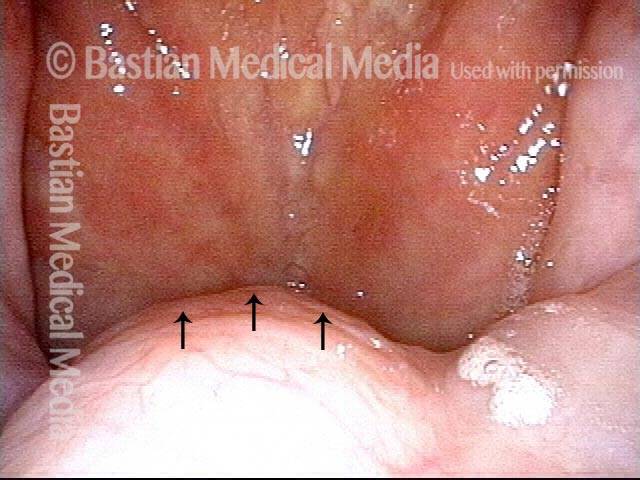Lifting of the soft palate so that its edge rests against the posterior pharyngeal wall, functionally separating the nasopharynx and oropharynx. Palate elevation occurs with each swallow to keep food or liquid from entering the back of the nose. It also occurs during speech with any non-nasal sounds (in English, all sounds except for “n,” “m,” and “ng”), keeping the sounds non-nasal by keeping air from passing out through the nose.

